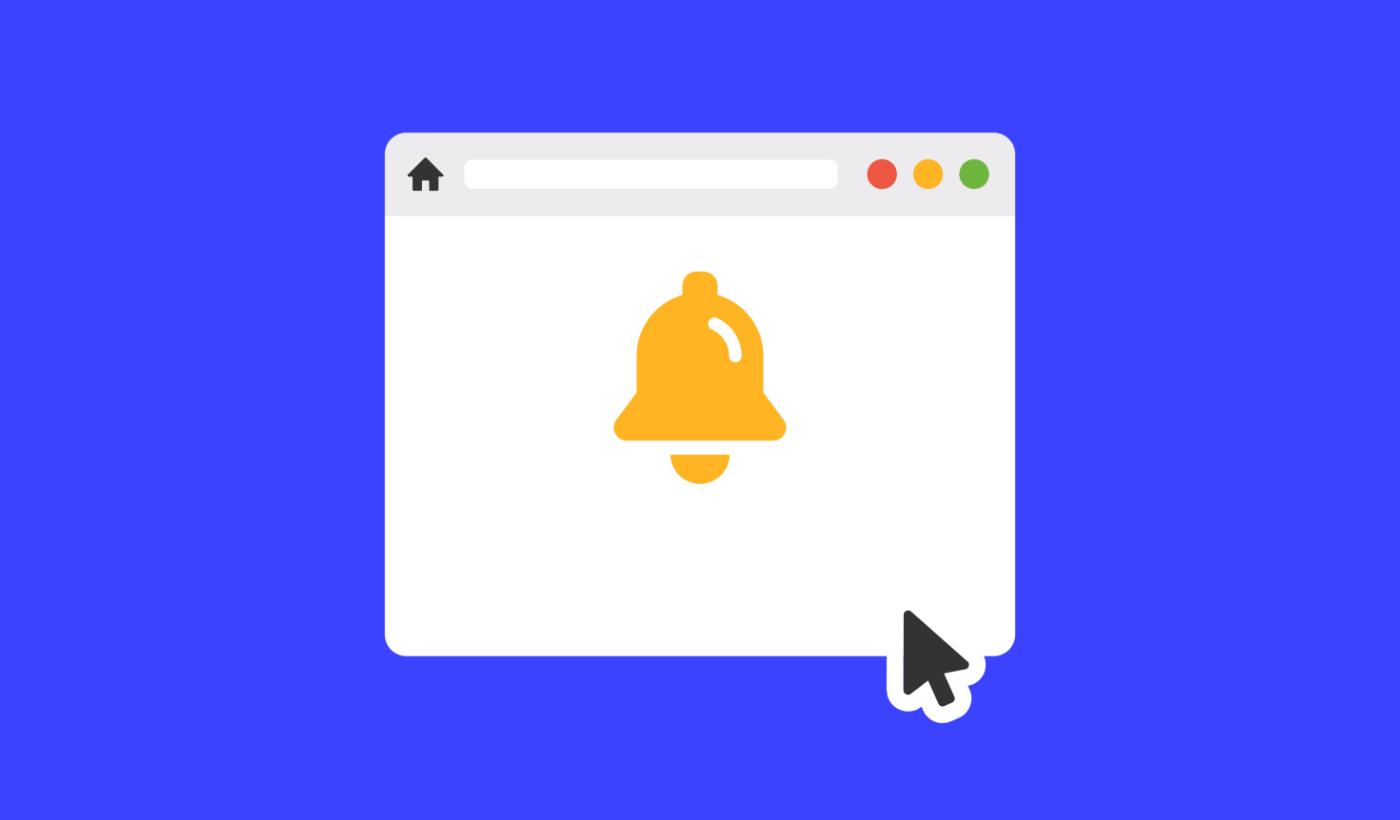How much do push notifications cost? Are they really free? Is there a push notification cost analysis that you can look at?
These are all great questions and we’ll answer them all in this article.
Push notifications are a great way to increase traffic, customer engagement, and sales on your site. But for someone who’s new to push notifications, it can be really confusing to see premium vendors on one hand and free push notifications on the other.
So, we’re doing a full pricing analysis on push notification services.
Let’s dive in.
Send Web and App Push Notifications Today!
Push notifications are a super effective, low-cost marketing tool to help you grow your repeat traffic, engagement, and sales on autopilot.
Can Sending a Push Notification Cost Nothing?
By now, you’ve seen at least a few push notification services that offer a free version.
So, what does that even mean?
You can have two types of free push notification services:
- Free push notifications with limitations
- Free trial for a limited time
And then, there’s the third kind of push notification service, which seems to be 100% free.
Notice our choice of words, “seems to be 100% free”.
Let’s take a look at each in turn.
Free Push Notification with Limited Features
Some push notification services offer limited features in a free plan. In fact, this is the most popular way in which premium push notification software will offer a free tier.
Using free push notifications with limited features from a top-tier vendor is the best way to grow a business especially if you’re new to push notification campaigns. Essentially, your push messages cost nothing at all, to begin with.
We recommend that you use PushEngage to get started with your push notification campaigns.
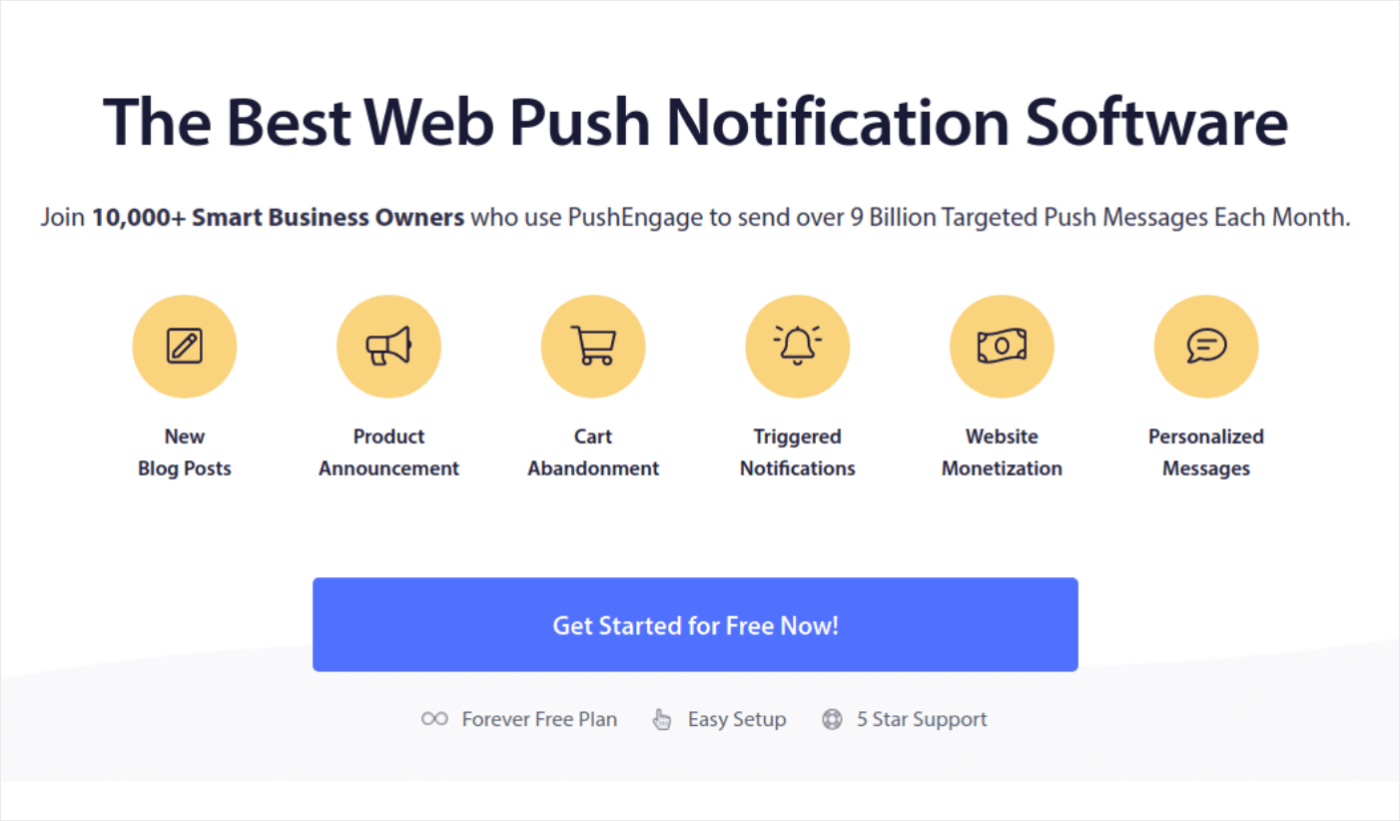
PushEngage is the best push notification software in the world.
And yes, PushEngage does have a free plan with limited features. The way in which PushEngage is priced allows you to get started for free, get some quick wins using basic push notification campaigns, and then use your profits to upgrade and unlock even more powerful campaigns and automation functionality.
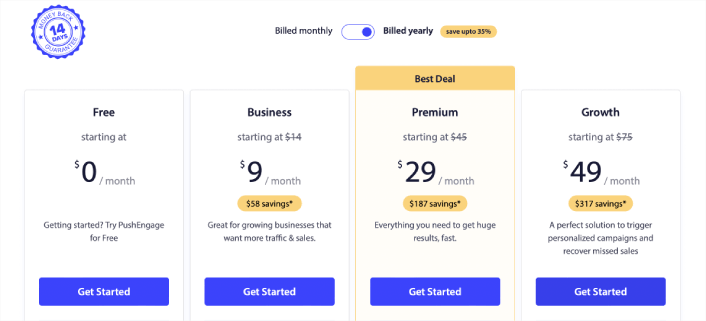
It’s a very cool way to do business because everyone wins.
Unfortunately, this is the best option if you’re looking for free push notification services. The rest of the options in this article are going to go straight downhill from here onwards. Even though they seem to be free, the push notifications cost quite a lot in reality.
Free Trial Push Notification Services
Free trial push notification services are some of the most common ways to send out free push notifications. You get free access to all features to test and try a plan. And then, if you like the services, you pay for the service.
You can use a push notification service to send web push, iOS push, and Android push notifications. With some omnichannel marketing platforms, you can also send SMS and MMS messages. You can even send in-app messages for a mobile application.
A 14-day trial period is a really small time frame for generating any real results with push notifications. It could be a good plan for marketing experts who really want to try out a certain push notification service before they buy. But if you have never used push notifications before and are not sure if they are worth it, you might want to look for a free service with limited features.
Again, if you’re a marketing pro with years of experience using push notifications, there’s no issue with getting a free trial of push notification software. You should check if they have:
- A rodbust SDK for marketing automation and custom mobile apps
- A/B testing options
- Templates for their popup push notification optin
- Pre-made workflows for powerful campaigns
- Push notification scheduling for different timezones
- Segmentation by geolocation
- Real-time reporting options to keep an eye on user engagement metrics
Just make sure you get the best push notification vendor in the market and check out their API. You’ll need the API for most advanced push notification campaigns.
This is important because vendors like Airship and OneSignal do have powerful APIs, but they also have their limitations. On the other hand, vendors like Catapush only have an API without a user interface. So, make your choices carefully.
Never Use Free Forever Push Notifications with Unlimited Access
Well, there’s no nice way to say this.
So, we’ll just come out and say it: Avoid push notification tools that cost nothing with unlimited access at all costs! Especially the ones that offer eCommerce push notifications for free.
By this, we mean transactional notifications like the ones you get from Amazon. It can be super tempting for you, especially when you’re running a SaaS startup. But it’s really not a good idea.
These are some of the most dubious push notification services in the world. Here are a few reasons:
Reason #1: Free Push Notifications Sell Customer Data to Make Money
Push notifications cost something to send. So, any decent push service will charge you to send notifications. This is especially true for automated push notifications with options to segment your audience.
There are server costs to maintain each customer’s account as well. The more complex the service offered, the costlier it is to manage server expenses. This is why the push notification services with a free tier will only offer you very basic campaign options in the free tier.
How does a business survive that much expense?
You have zero incentive to shift to a paid plan if they’re giving you everything for free, right?
So, to cover the cost of sending push notifications, forever-free push notification services will sell your data.
For example, the privacy policy of Truepush mentions that “…same data may be anonymized and shared internally or externally.” If you dig a little deeper, you discover that they can even place cookies tracking your subscribers and their behavior: “…We or our ad-service platform may deploy online cookies to track users across websites or to associate users…”
FoxPush does something similar where they state clearly in their Terms and Conditions that they, “…collect, use and disclose the Publisher Data to third parties…”
In simple terms, these vendors collect your data and your subscribers’ data and sell it to third-party apps that serve ads. And your competitors are the ones who’ll be using this data to buy ad space and poach your customers.
Sometimes, it’s not really as harmful as all that. In some cases, your app users might end up seeing social media ads from businesses that complement your business. But if you’re running an app development startup or even a SaaS startup, do you really want to take that chance when customer retention is already difficult?
Also, it doesn’t matter if you’re running a WordPress site or a Shopify store. The servers that allow you to send web push or mobile push notifications don’t depend on what platform your website is built.
Reason #2: GDPR Compliance Issues Can Cost You Your Business
European regulation has made it mandatory for websites to follow GDPR to safeguard user data and privacy. GDPR maintains that user consent is taken before planting cookies.
Most of the free push notification service mentions that they are GDPR compliant. However in case, your subscriber wants to be removed from the list, they have to contact the third-party vendor. Take a look at what’s mentioned in the Foxpush cookie policy:
“With regard to Cookies installed by third parties, Users can manage their preferences and withdrawal of their consent by clicking the related opt-out link (if provided), by using the means provided in the third party’s privacy policy, or by contacting the third party.”
At PushEngage, we make sure that our customer is compliant with all the regulations. We have features that specifically help the customer to be GDPR compliant. A few of the features are:
Legal Consent: You have the option to show the legal consent to customers.
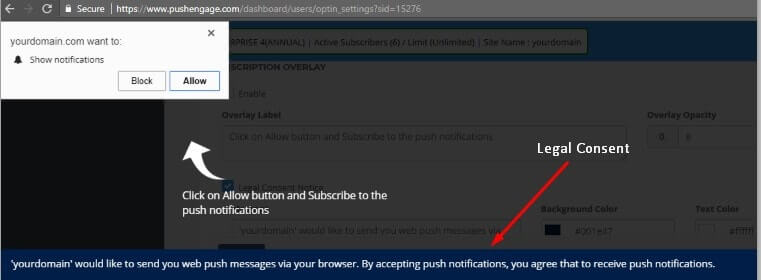
Unsubscribe Option for Subscribers: PushEngage allows you to enable unsubscribe option. A user can unsubscribe by clicking the button.
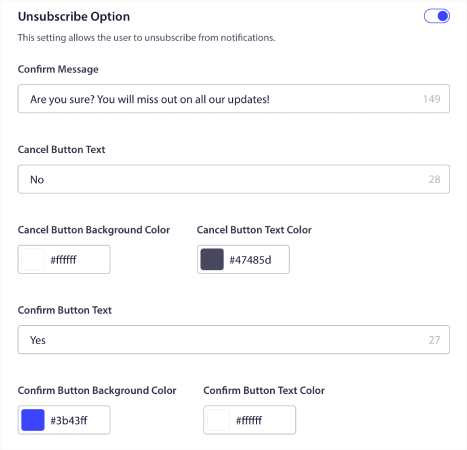
Reason #3: “Unlimited Free” is the Same as Abusive
There’s no such a thing as “unlimited free” of anything. We understand that you want to lower your push notification cost to optimize your marketing budget. But there’s a catch with using unlimited free push notification services.
Every plan for every push notification service must have a Fair Usage Policy (FUP). The FUP restricts the number of push notifications you can send to each of your subscribers in a given time frame.
In simple terms, the FUP prevents you from spamming your subscribers with too many push notifications.
And this is a healthy practice. Sending too many notifications will result in your subscribers getting sick of hearing from you. Not only will they unsubscribe from push notifications, but they’re also likely never going to buy from you again. This is especially true for subscribers on mobile devices.
Now, if you also consider the push notifications that your vendors will send to serve ads that make money, you’ll definitely be spamming your subscribers.
But that’s not all that could go wrong.
Google’s bots auto-subscribe to push notifications from every website in their index. And if they suspect that you’re sending out abusive content, your site gets flagged for enforcement.
What happens if your website gets flagged? Who will take the responsibility? The service provider doesn’t guarantee that your site will never be flagged for abusive push notification content.
Web push notifications are built specifically for browsers and Chrome occupies the largest share of all actively used browsers. If you get flagged by Google for sending abusive push notifications, you will lose out on a big share of your target market.
Final Verdict: How Much do Push Notifications Cost?
Push notifications will cost you anywhere from $200 to $900 a year for a profitable, small-sized business. For a mid-sized business with more offerings and customer segments, it costs anywhere up to $1200 a year. And for a large enterprise, the push notifications may cost upwards of $10,000 a year depending on the business. Push notifications are still extremely cost-effective compared to other marketing channels.
And if you’re just getting started with a brand new business, you can start with a free plan.
Free trials are fine if you’re running a small website and want to test out push notification campaigns with limited features. As you grow your site, you can upgrade to a paid plan.

Depending on what stage of growth your business is in, you would want different features. But any decent push notification software is priced in a way that allows you to get enough growth out of each tier to be able to re-invest with them and upgrade to the next tier.
And if you’re running a WordPress site, then you can get started with a free plan for almost all push notification services.
We recommend using PushEngage. PushEngage is the #1 push notification software in the world. It’s also the only push notification service with a WordPress plugin that allows you to send and manage push campaigns directly from your WordPress dashboard and post editor.
Not convinced? Check out these amazing resources first, then:
- How to Convert Subscribers To Buyers Using Web Push Notifications
- Push Notification Best Practices
- 21 Best Website Welcome Message Examples You Can Use
- Why Welcome Push Notifications Are Important
- How to do Push Notification A/B Testing (Best Practices)
You can get started for free, or you can buy a paid plan with more powerful features.
